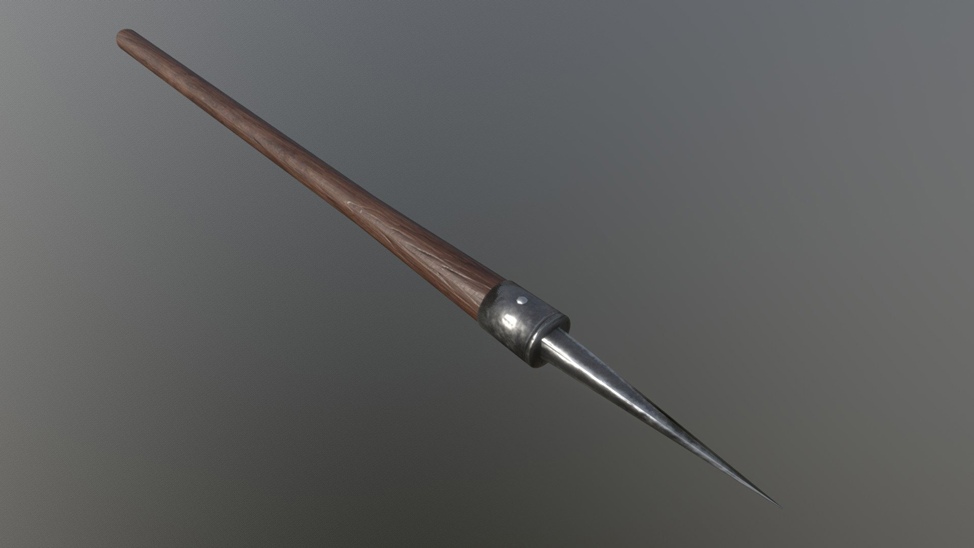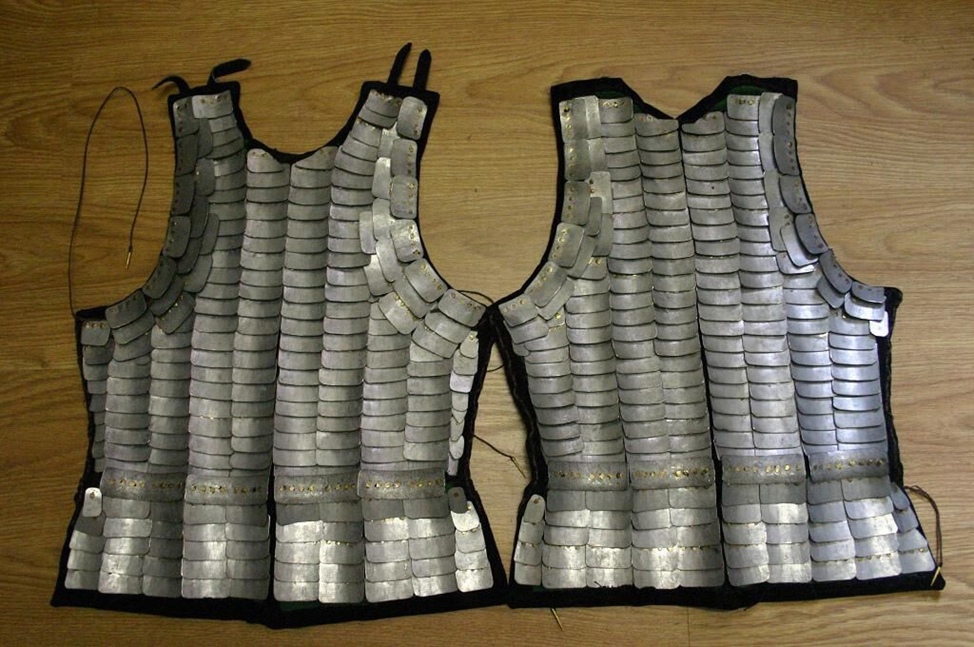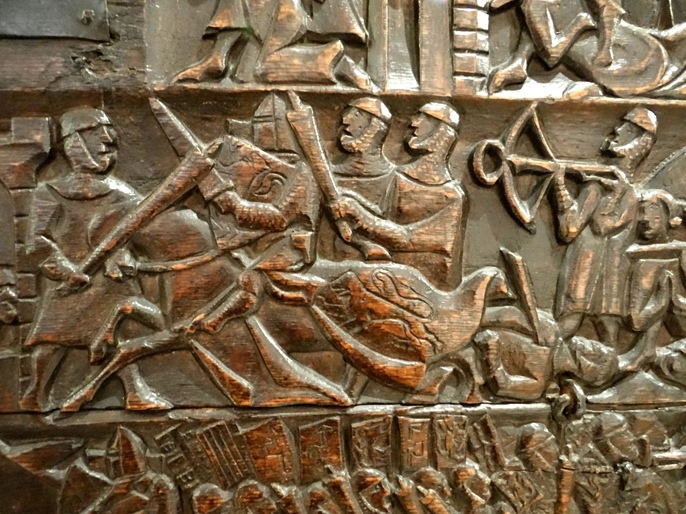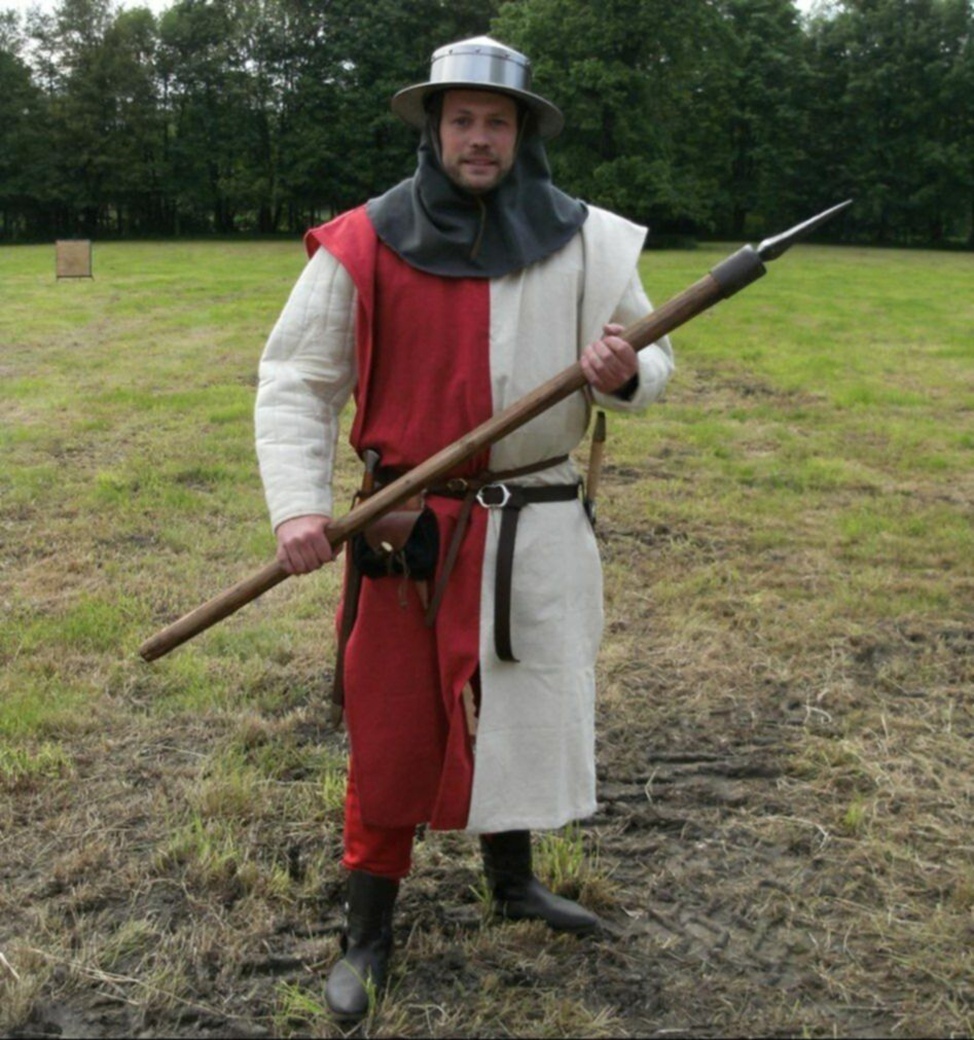
No products in the cart.
Thanks to modern cinema and video games, some of the inhabitants got the impression that bladed weapons were the most effective on medieval battlefields. Although, in fact, long sword-type blades were weapons that indicated the high status of the owner, and during the battle they served when a small distance did not allow the use of a spear or a knight dismounted. And definitely bladed weapons did not decide the outcome of the battle. Cinema and video games have unnecessarily popularized the sword due to the opportunity to demonstrate later stage fencing.
Copies of shaft weapons were used more massively, which were easy to use and required less expensive steel or, as in the case of axes, lower-quality raw materials were used for manufacturing without compromising combat properties. It was the relative cheapness and the ability to keep a distance that made the spear a massive shaft weapon.
We will consider a copy of the shaft weapon, which appeared at the end of the 13th century and was used against knights throughout the 14th century. We will talk about the shock-piercing weapon of the
Flemings – goedendag (Dutch for “good afternoon”).
The history of the appearance of the goedendag:
Before proceeding to goedendag, it is necessary to
understand the context of the events in which he appeared. So, Flanders is the
second half of the 13th century, a region feudally dependent on the French
crown. The region was a powerful center of workshop production of cloth, which
was in demand in everyday life. Unfortunately, for the Flemings, they had few
pastures for grazing sheep and, accordingly, collecting wool for the
manufacture of cloth. Therefore, trade was established with England, which had
a lot of pastures, which was enough to export raw materials to other countries.
In general, due to the rapid development of crafts, cities had a fairly large
population by medieval standards, while many led a fairly prosperous lifestyle.
The administration of Flemish cities could afford to create large enough
arsenals, and the citizens themselves could afford to order equipment.
It should be noted that strong trade ties with England and
the desire of the
Flemish Guy of Dampierre, count of Flanders for independence
led at first to purely political confrontations with the French King Philip the Fair. But with the beginning of the Anglo-French war (1294-1298), Guy of Dampierre saw an opportunity to gain full independence and sent a letter in January
1297 to the French suzerain, in which he refused to submit and in fact began
the war. He and his army could not offer serious resistance to the French,
since help from the British did not come, due to the conclusion of peace in
1298.
The French defeated the Flemings and captured the count
and his sons. And the Flemish cities were under occupation, which led to the
strengthening of the pro-French bourgeoisie in the city government and, in
fact, they controlled the trade in English wool. In addition, the French king
increased taxes on trade with England, which ultimately led to the
dissatisfaction of the guild masters. At first, the senior guild masters tried
to solve the issue by appealing to the king. However, this only led to the
arrest of guild masters, which inevitably led to a revolt of the masters and not
pro-French bourgeois in 1302.
This is where the history of the goedendag begins as a weapon of the Flemish city militia. The Goedendag was a shaft weapon with a shaft of 120-150 cm and a thickening of the working end. The working end was bound with iron with a faceted short pike. The shaft was made of durable wood such as ash, oak or beech. If we draw analogies with modernity, then it was a metal-reinforced baseball bat with a sharp tip. Perhaps this shaft weapon was made before the Flemish uprisings, but it was during the struggle against French expansion that it became widespread. Such a club with a spike was very cheap 10 -12 shillings, with an average daily income of a guild master of 3 shillings.

The use of the goedendag by the rebels and the city militia:
The goedendag was a very effective weapon during the first
half of the 14th century. The spike on the thickened shaft made it possible to
have a powerful lever for applying a piercing blow that would pass through the
chain mail and cause a serious wound. And accordingly, such a weapon could be
successfully used against a footed opponent in chain mail and gambeson.
Against the knights of the first half of the 14th century, the Flemish goedendag could also be successfully used, since plate armor was just beginning to develop and representatives of the military nobility were equipped with brigandines. The knight's brigandine was harder to pierce with a spike, so the blows were inflicted in weakly protected places, according to the type of neck and armpits.

Brigandine
view from the inside
Do not
forget about the impact properties. Sweeping blows to the limbs or to the body
could knock the opponent off balance and cause blunt injuries. A blow to an
unprotected head, for example, could be fatal.
The weapon
was very effective in the conditions of the streets of the city, which is
proved by the Matins of Bruges of 1302. During the uprising of artisans and
ordinary citizens of Bruges, they used various weapons, including goedendag.
During this riot, the rebels killed pro-French citizens, patricians, bourgeois
and the French themselves. The rebels forced passers-by to say in Dutch:
"schild en vriend", which means "shield and friend" and if
they heard a foreign accent, they were immediately killed. From this moment
begins the story of the resistance of Flemish townspeople and peasants to the
French king and the pro-French nobility.
The Flemish cities of the end of the first half of the 14th century staged several uprisings due to high taxes, in which they were able to resist the French knights with the help of heavy infantry. The rich cities of Flanders were able to field several troops with a serious strength of 4 – 8 thousand, equipped with long chain mail, leather armor, spears with hooks and goedendags.

Warriors
armed with goedendags on the " Courtrai Chest"
Flemish goedendags
were used in confrontation with the French cavalry. The Flemings formed a
phalanx or corona formation. The first few rows were warriors with spears with
hooks, then there were infantrymen armed with goedendags. If the cavalry
attacked the phalanx and the corona and the formation did not waver at the
sight of the riders, the speed of the horses slowed down and the full
effectiveness of the offensive. In this case, the spearmen could pull the rider
off the horse with a hook, and the dismounted opponent could finish off with a goedendag.
Using such tactics, the Flemish infantry was able to somewhat defeat the French cavalry, as during the Battle of the Golden Spurs in 1302, when about 700 knights died, which was a major military defeat for King Philip IV. And during the Battle of Mons-en-Pévèle in August 1304, the French almost suffered a crushing defeat, because the Flemings with spears and goedendags launched a surprise attack on the French and were able to reach the royal tent. King Philip managed to escape only thanks to his personal bodyguards – knights. The French managed to organize a counterattack, the Flemings retreated and formally they won the battles with serious losses.

The Battle
of Mons-en-Pévèle, by Charles Philippe Larivière (1839)
Goedendags have been used for quite a long time. This shaft weapon was used by the Flemings during the Flemish peasant revolt of 1323–1328 and during the Hundred Years' War by the pro-English forces of Flanders. In the 15th century, this shaft weapon was no longer used. Flanders, as a result of the Hundred Years' War, came under the control of France
